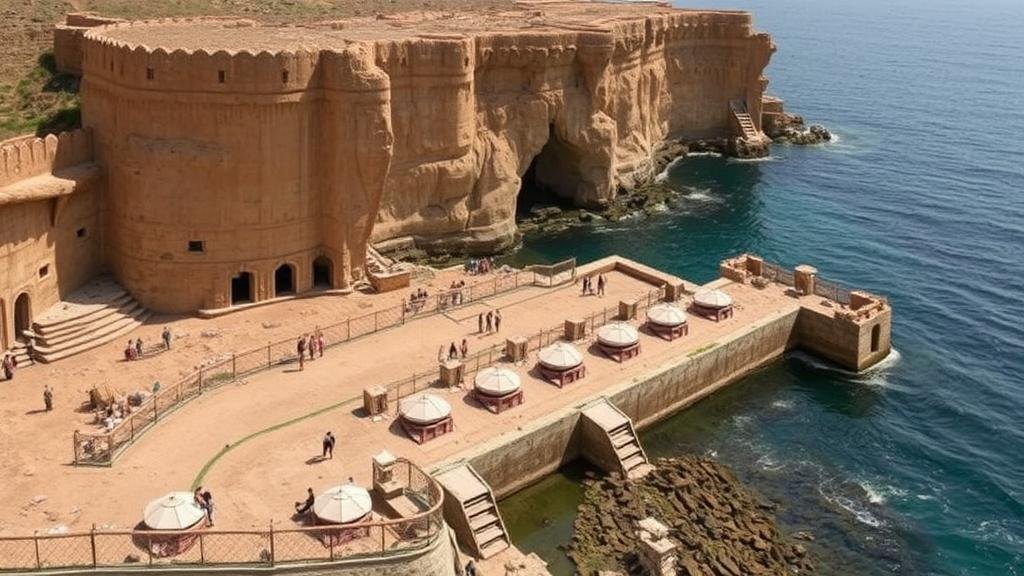Searching for remnants of ancient cities rumored to have sunk in the Caspian Sea.
Searching for Remnants of Ancient Cities Rumored to Have Sunk in the Caspian Sea
The Caspian Sea, the largest enclosed inland body of water in the world, has long been the subject of myths and speculation, particularly concerning ancient cities believed to have vanished beneath its waves. This article delves into the historical context of these rumors, the scientific pursuits involved in uncovering such remnants, and the cultural significance behind these lost cities.
The Historical Context
For thousands of years, various civilizations have flourished along the shores of the Caspian Sea. Noteworthy cultures include the Scythians, Sarmatians, and later the Persian Empire. As these societies evolved, some settlements reportedly faced catastrophic events that led to their submersion.
One of the most famous legends is that of the ancient city of Khwarezm, believed to have existed during the first millennium BCE. Historical texts suggest that Khwarezm was a thriving hub of trade and culture. But, environmental changes and seismic activity may have contributed to its demise, leaving behind tantalizing hints of lost architecture submerged in the Caspian.
Scientific Exploration and Discoveries
Modern exploration of the Caspian Sea has utilized advanced technology to search for these submerged cities. Remote sensing, sonar mapping, and underwater archaeology are among the key methods employed in this endeavor. Notably, the Caspian Sea has experienced significant fluctuations in water levels, historically fluctuating between several meters due to climatic changes. This factor provides potential opportunities for discovering submerged archaeological sites.
In recent years, expeditions have surfaced with promising findings. Explorers have reported identifying structures that may belong to these ancient cities. For example, sonar imagery has revealed formations resembling streets and buildings, igniting excitement within the archaeological community.
Challenges of Underwater Archaeology
While the prospects of discovering ancient ruins are thrilling, the reality of underwater archaeology presents numerous challenges. Key obstacles include:
- Visibility and Conditions: The often murky waters of the Caspian limit visibility, complicating exploratory efforts.
- Environmental Impact: Explorations must adhere to strict environmental guidelines to protect the ecosystem.
- Funding and Resources: Securing adequate funding for expeditions can hinder sustained research efforts.
Cultural Significance
The search for these lost cities in the Caspian Sea is not merely about historical curiosity; it encompasses cultural heritage. For many nations bordering the Caspian, such discoveries can affirm national identities and enhance understanding of their historical trajectories. The significance of archaeological heritage extends beyond borders, fostering a shared appreciation of human civilizations evolution.
Also, these findings can enrich our knowledge of ancient societies. For example, the study of architectural styles and urban planning in submerged areas could provide insights into trade networks and sociopolitical dynamics of ancient civilizations.
Real-World Applications
Understanding ancient coastal societies can have contemporary implications as well. Insights from this research can inform modern urban planning, particularly in regions susceptible to rising sea levels and environmental change. Here are several applications:
- Climate Change Studies: Analyzing how ancient societies adapted to changing environments can inform current strategies for climate adaptation.
- Historical Contextualization: By uncovering ancient infrastructure, researchers can better understand historical socio-economic systems.
Actionable Takeaways
The quest to uncover the submerged cities of the Caspian Sea is a multifaceted journey that combines history, archaeology, and environmental science. Interested individuals can contribute to or support this field by:
- Staying Informed: Follow updates from archaeological expeditions and documentaries related to Caspian Sea explorations.
- Advocating for Research Funding: Support initiatives and policies that promote archaeological research and heritage preservation.
- Participating in Local Archaeological Efforts: Engage with local museums or universities to support research and education initiatives focused on underwater archaeology.
As explorations continue, the Caspian Sea may yet yield its secrets, revealing stories of civilizations that thrived before being claimed by the water.



